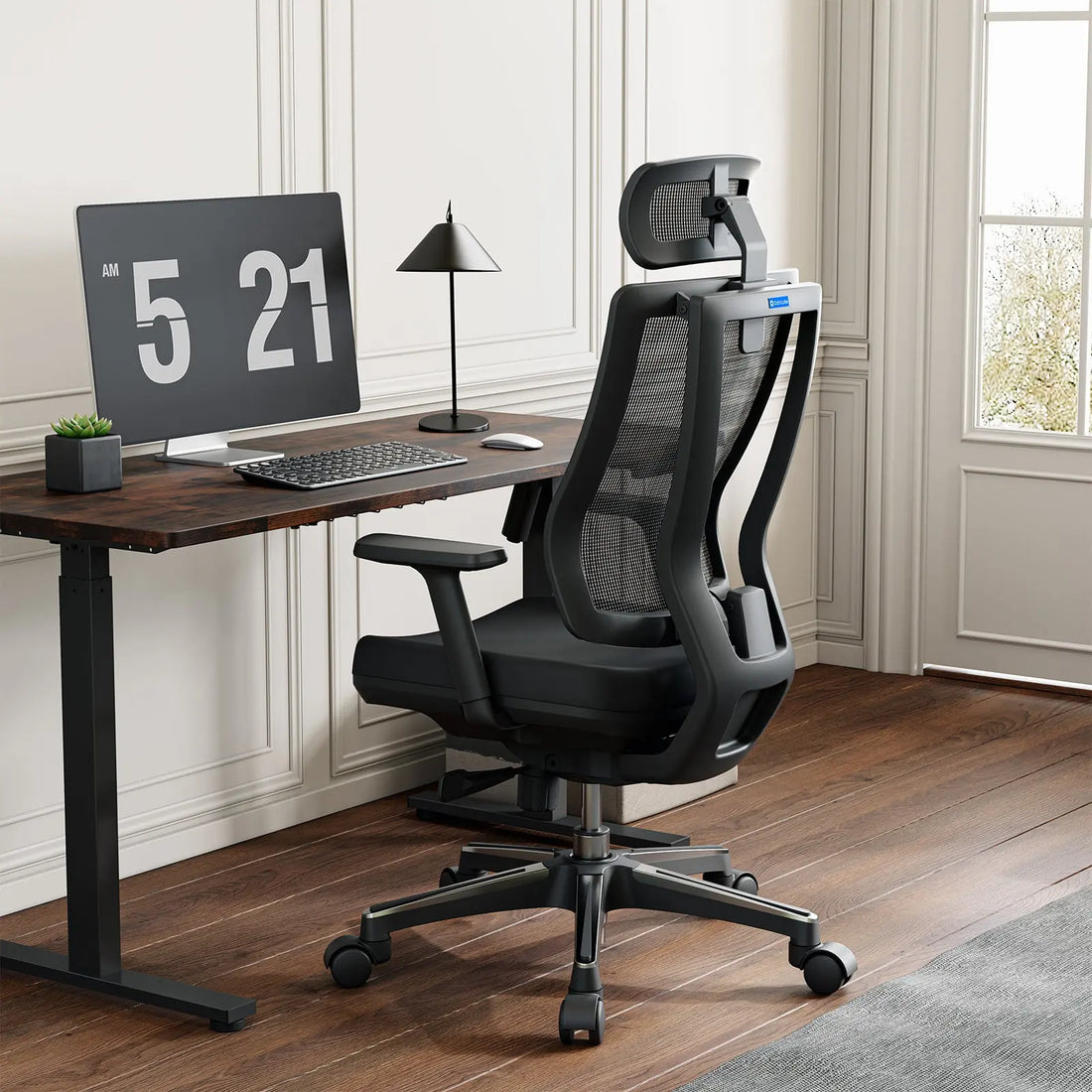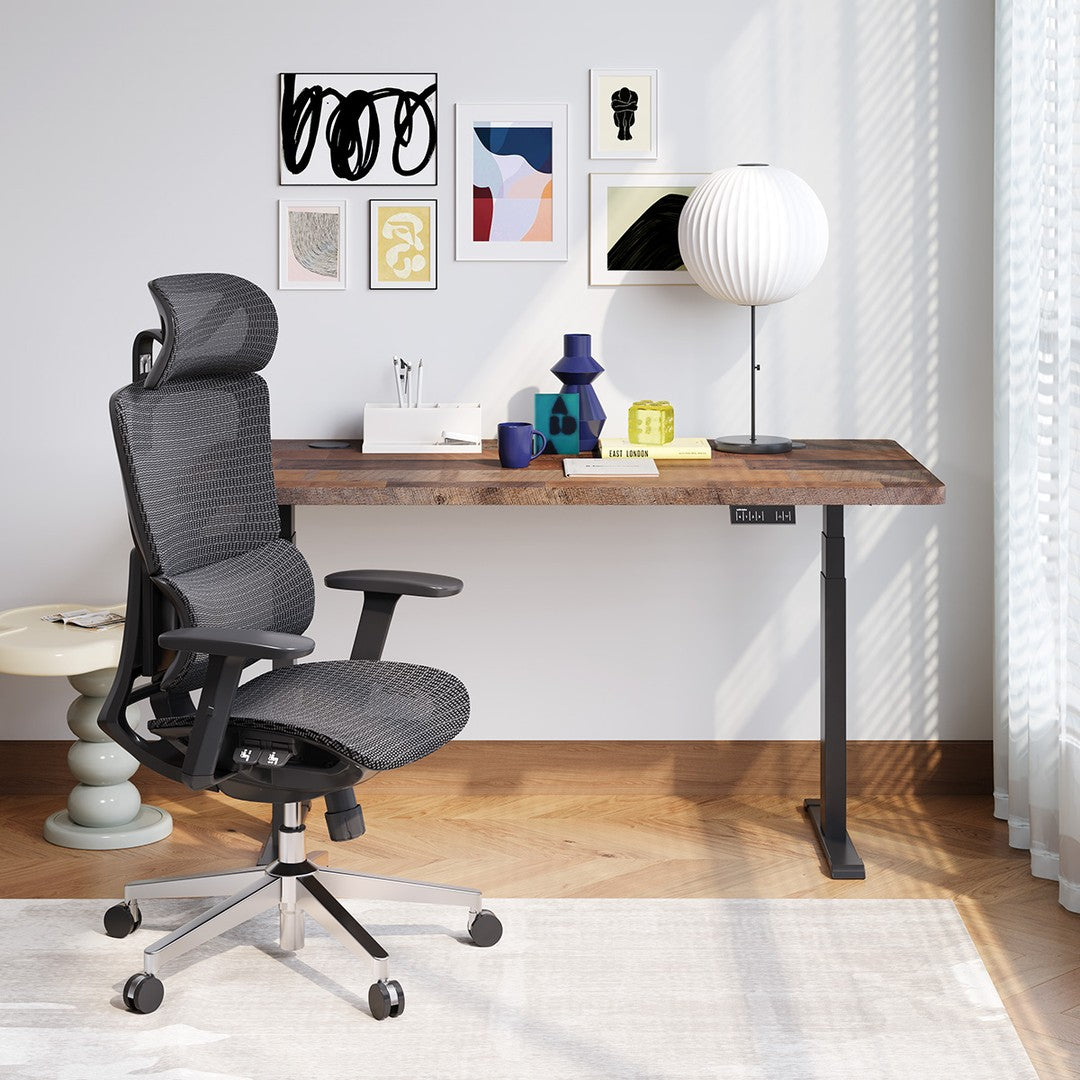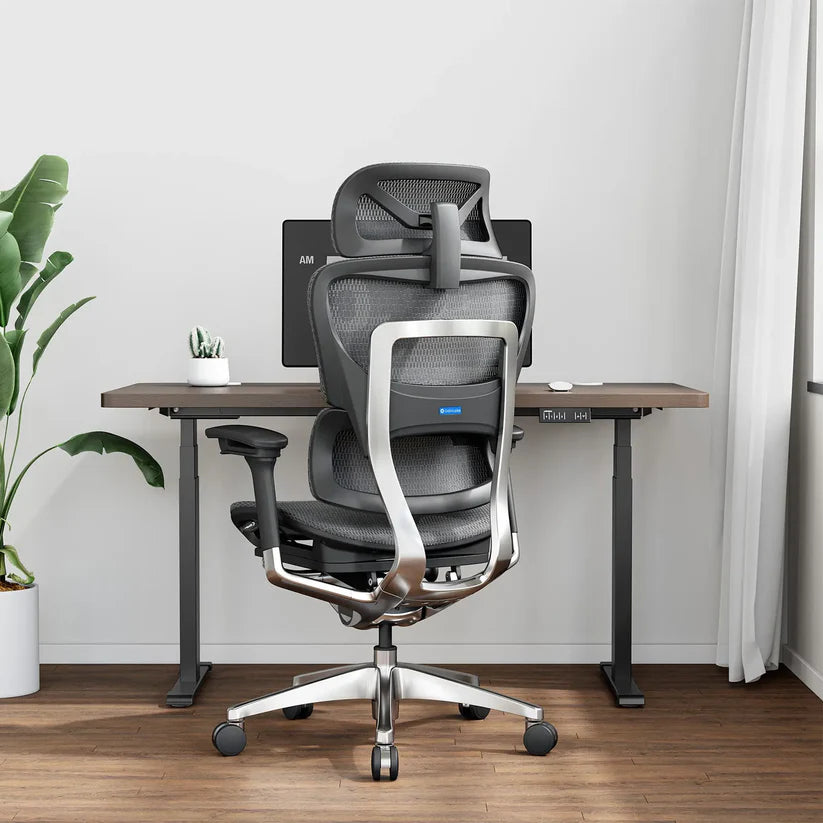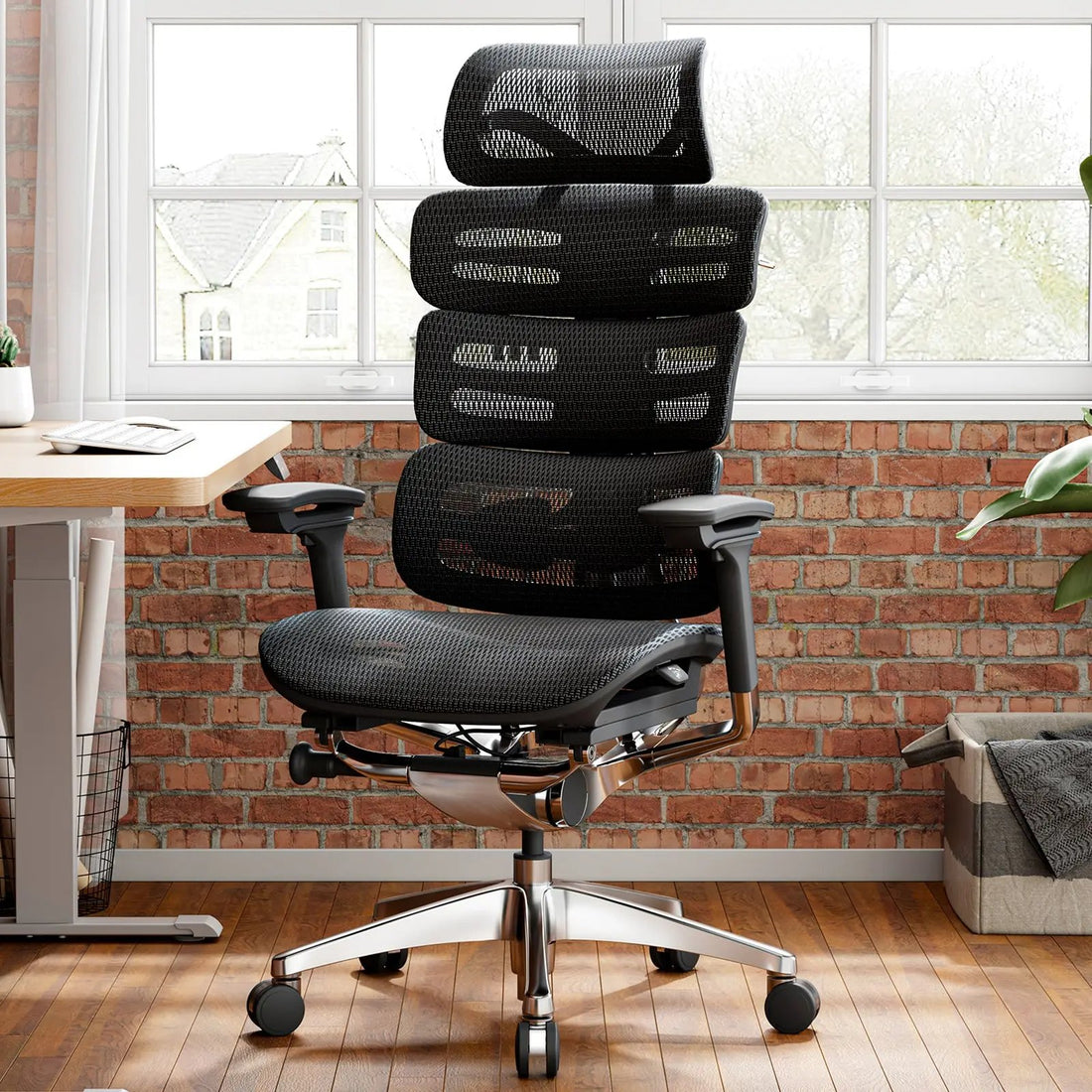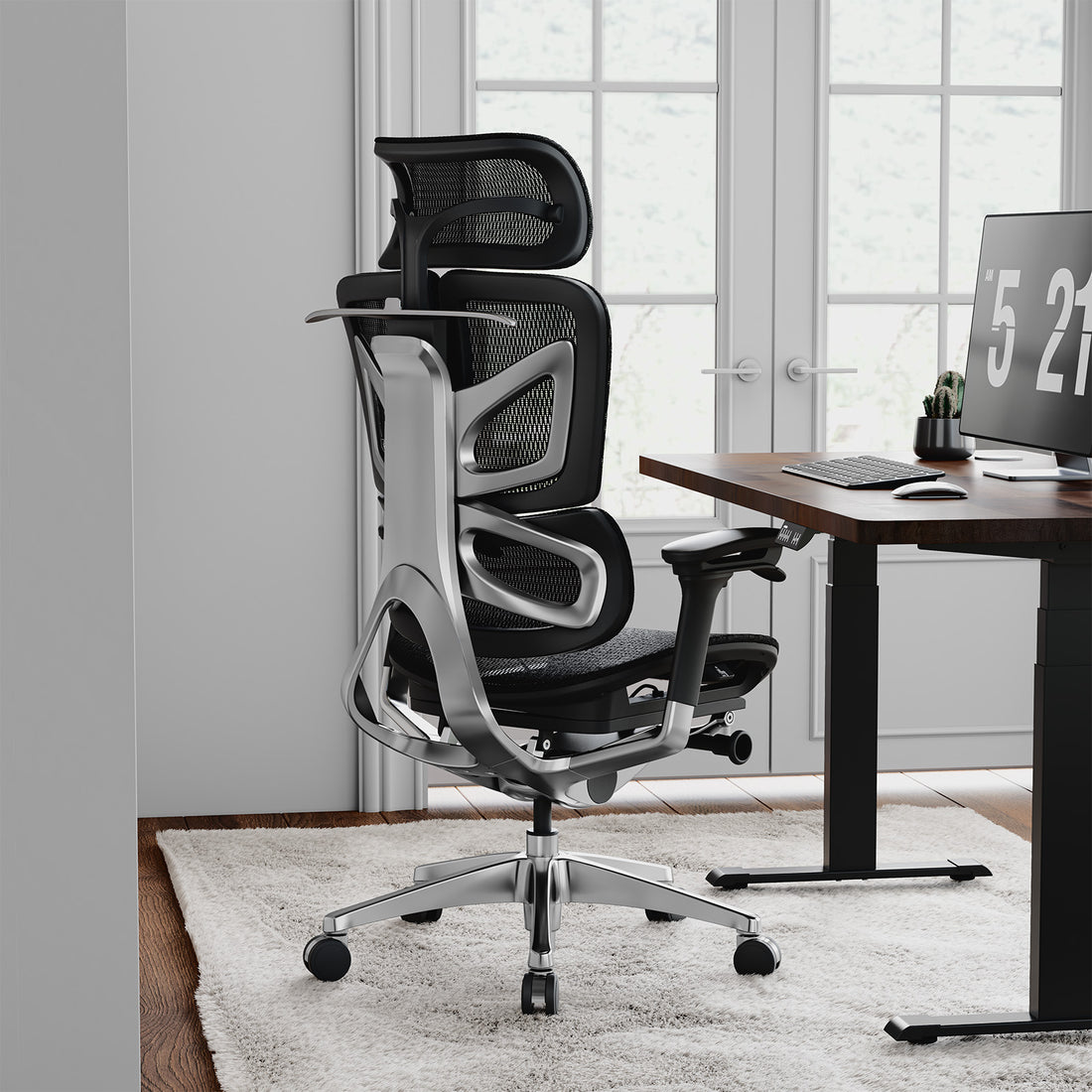
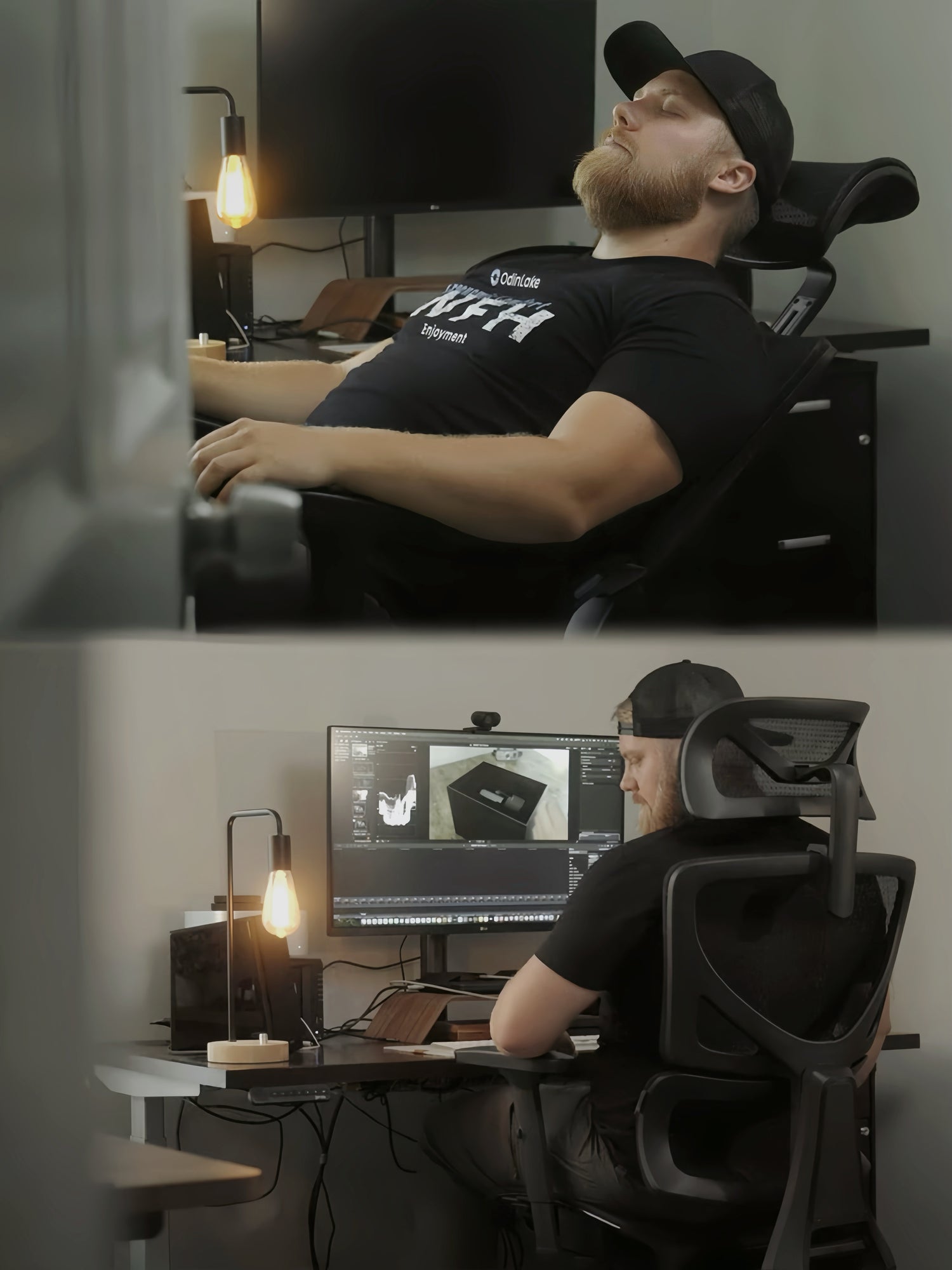
Which ErgoChair is right for you?
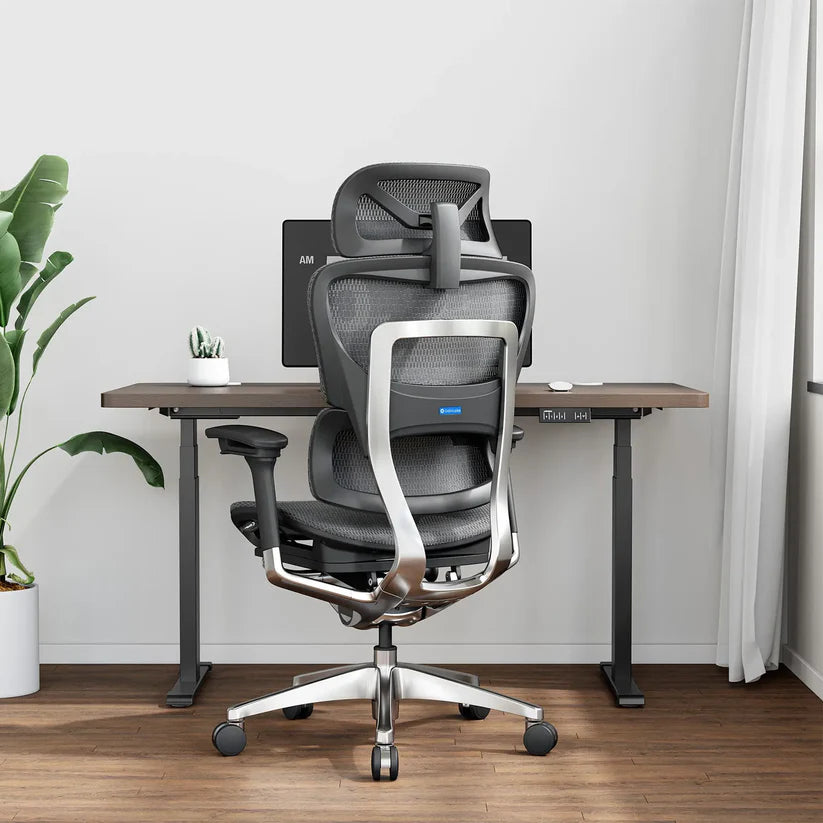
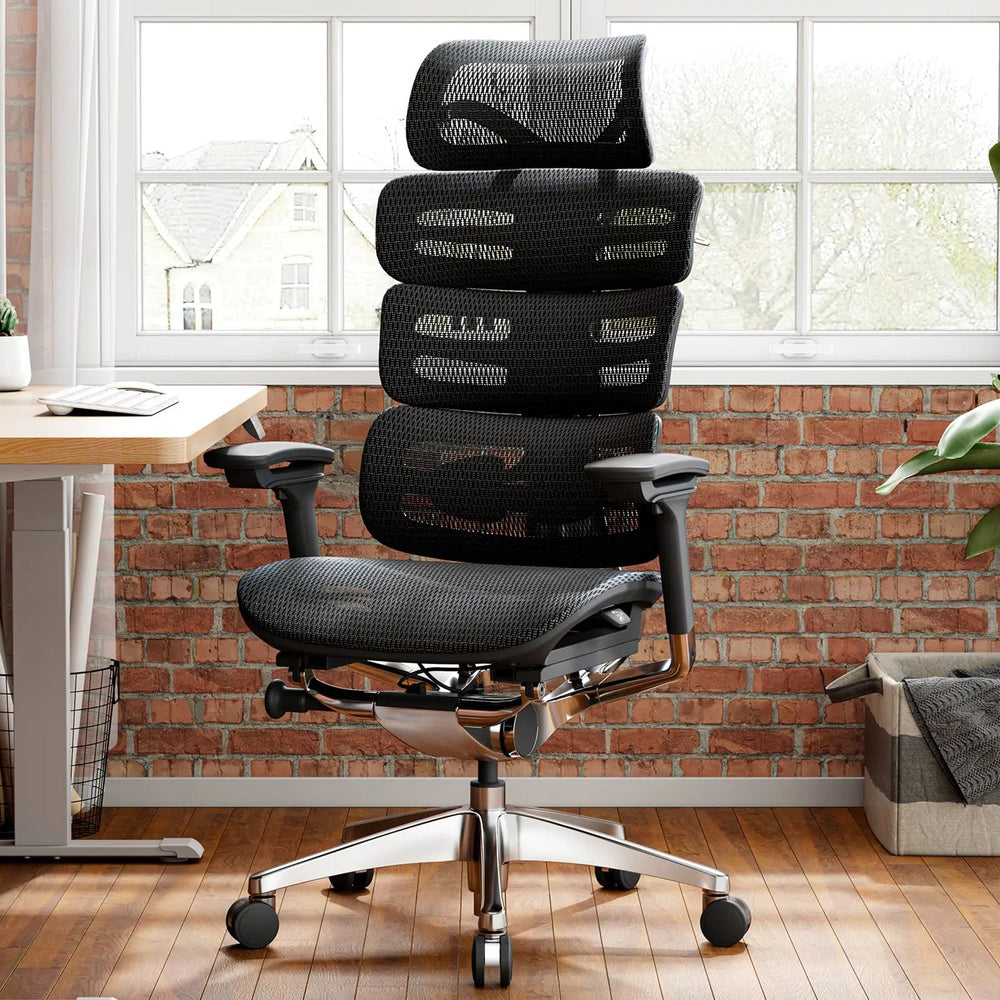
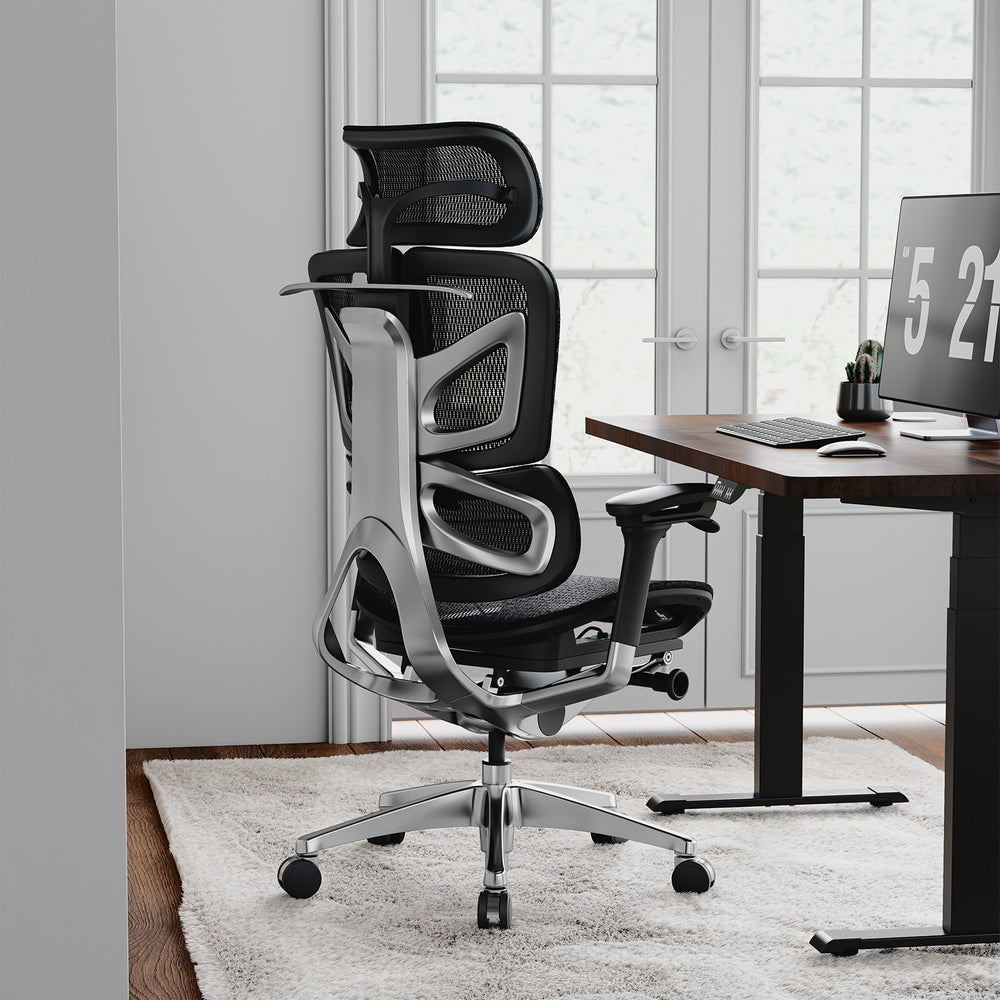
-
Cushion typeMesh
-
Armrest type4D armrest
-
WireControl™Yes
-
Mesh materialFlexBreath™ A+
-
FrameAluminum alloy
-
Seat height18.0"-22.0"
-
Load capacity350 lbs
-
Gaslift gradeClass 4
-
Warranty15 years
-
$699.00BUY NOW
-
Cushion typeMesh
-
Armrest type4D armrest
-
WireControl™Yes
-
Mesh materialFlexBreath™ A+
-
FrameAluminum alloy
-
Seat height18.0"-22.0"
-
Load capacity350 lbs
-
Gaslift gradeClass 4
-
Warranty15 years
-
$799.00BUY NOW
-
Cushion typeMesh
-
Armrest typeIntegrated 3D armrest
-
WireControl™Yes
-
Mesh materialFlexBreath™ A+
-
FrameAluminum alloy
-
Seat height18.0"-22.0"
-
Load capacity350 lbs
-
Gaslift gradeClass 4
-
Warranty15 years
-
$899.00BUY NOW
How to Sit Pain-Free
Why use an ergonomic chair?

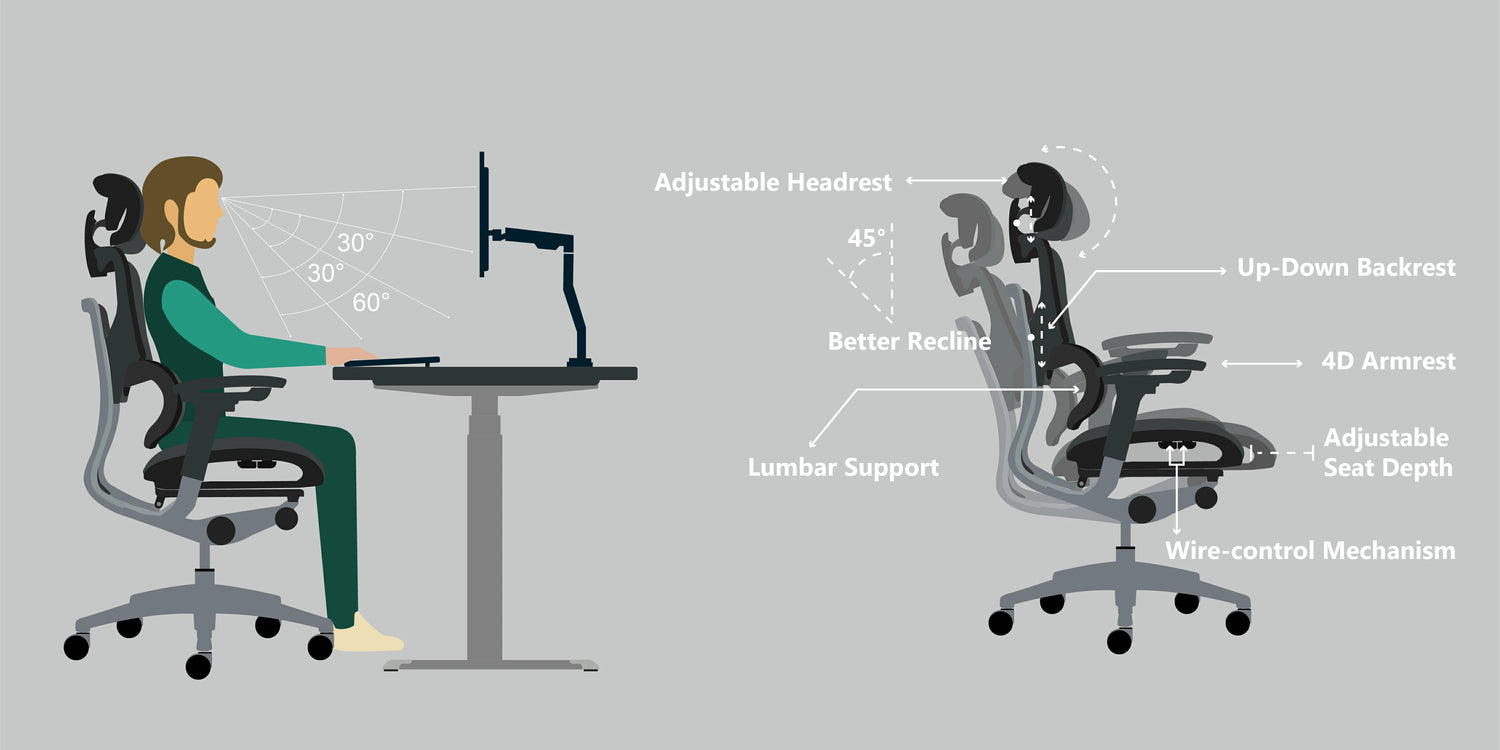
Improved Posture, Reduced Back & Neck Pain
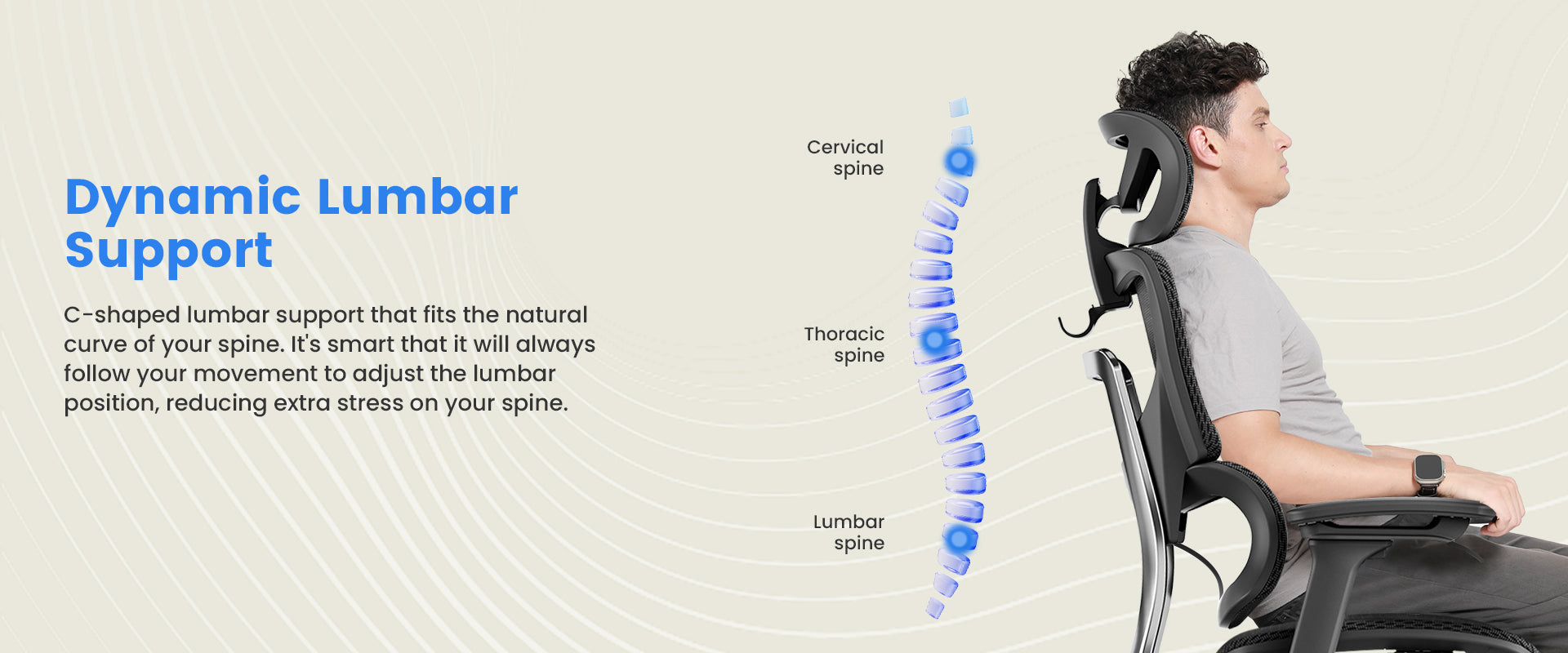
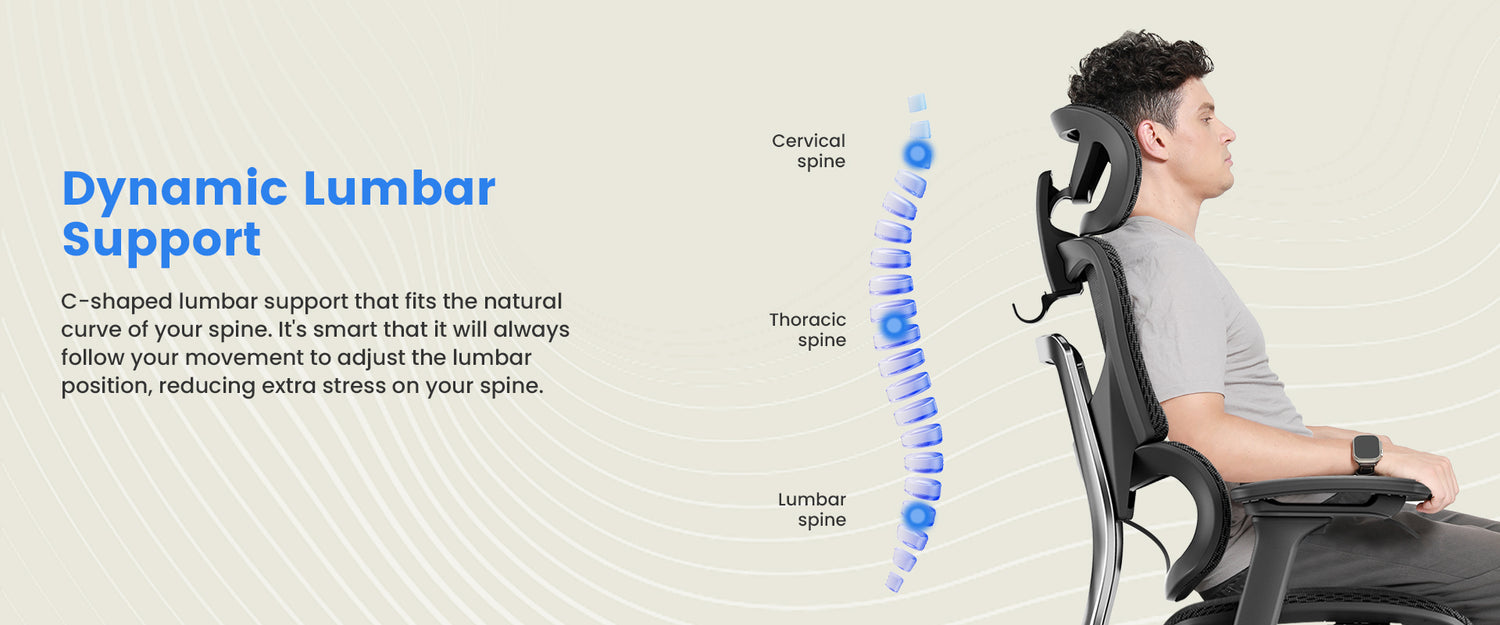
ErgoChair FAQs
What is ergonomic chair?
An ergonomic chair is a specially designed chair that supports the natural posture of the human body, aiming to reduce discomfort and prevent injury during long periods of sitting. Unlike regular chairs, an ergonomic chair focuses on adjustable features such as lumbar support, seat height, armrests, and backrest angle. This design helps maintain proper spinal alignment and improves comfort, making it an essential choice for anyone who spends hours working at a desk.
When it comes to ergonomic office chairs, choosing an ergonomic chair is especially important.Office chairs are built to enhance productivity and reduce the risk of musculoskeletal problems caused by poor posture. These ergonomic office chairs not only provide comfort but also encourage movement and flexibility, which are crucial for long-term health. Investing in a good ergonomic chair can significantly improve your work experience and overall well-being.
What are the main features of an ergonomic chair?
The main features of an ergonomic chair are designed to support the body’s natural posture and promote comfort during extended periods of sitting. Key elements include adjustable seat height to ensure your feet rest flat on the floor, lumbar support that fits the curve of your lower back, and a seat depth that accommodates different leg lengths. Additionally, an ergonomic chair often has adjustable armrests to reduce strain on your shoulders and neck, as well as a reclining backrest to encourage movement and reduce pressure on the spine.
When selecting office chairs, it’s important to look for these essential features in ergonomic office chairs to maximize comfort and productivity. Quality ergonomic chairs also include breathable materials for better airflow and swivel bases to allow easy movement. These features combined help reduce fatigue, improve posture, and prevent common issues like back pain, making an ergonomic office chair a smart investment for any workspace.
What are the health benefits of an ergonomic chair?
The health benefits of office chairs are obvious, especially for those who spend long periods at a desk. Reclining office chairs, with adjustable backrest angles, can help reduce pressure on the spine and improve blood circulation. This feature supports the natural curve of the back, preventing common problems such as lower back pain and muscle stiffness. Using a reclining office chair can improve posture and reduce the risk of chronic pain caused by poor posture.
Beyond comfort, reclining office chairs allow you to lean back during breaks, relieving muscle tension and promoting relaxation. This movement helps reduce stress and fatigue, improving overall productivity and well-being. Many ergonomic office chairs also offer adjustable features to support the neck, shoulders, and hips, ensuring full-body support throughout the workday. Therefore, investing in a high-quality office chair can significantly contribute to long-term health and comfort in the workplace.
How do I choose the right ergonomic gaming chair?
Choosing the right ergonomic gaming chair involves considering several important factors to ensure comfort and support during long gaming sessions. First, look for adjustable features such as seat height, armrests, and lumbar support, which help customize the chair to your body shape and posture. A good ergonomic gaming chair should also have breathable materials to keep you cool and reduce sweat, as well as a sturdy frame that can support your weight safely.
Another key point when selecting an ergonomic gaming chair is to check for proper cushioning and a design that encourages good posture. The chair should provide adequate back and neck support to prevent strain and fatigue. Additionally, consider chairs with reclining functions and swivel capabilities, which add flexibility and movement during use. By focusing on these features, you can find an ergonomic gaming chair that enhances comfort and performance, making your gaming experience healthier and more enjoyable.
Who is an ergonomic chair suitable for?
An ergonomic chair is suitable for anyone who spends extended periods sitting, whether at a desk for work, studying, or enjoying leisure activities. It’s particularly beneficial for office professionals, remote workers, students, and gamers, as it provides proper lumbar support, promotes healthy posture, and helps prevent back, neck, and shoulder strain.
For those who spend long hours playing video games, an ergonomic gaming chair offers the same posture-friendly benefits while also enhancing comfort during intense gaming sessions. By supporting the spine’s natural curve and reducing pressure on key points, both an ergonomic office chair and an ergonomic gaming chair help maintain comfort, focus, and overall well-being over time.
What is the typical price of an ergonomic chair?
The typical price of a chair ergonomic design can vary widely depending on the materials, adjustability, brand, and overall build quality. Entry-level chair ergonomic models usually start around $100 to $200. These basic ergonomic office chairs may offer essential lumbar support and adjustable height but might lack advanced features like 4D armrests or dynamic back support. Mid-range options, which are popular in home and small office setups, generally fall in the $300 to $600 range and offer better customization, breathable mesh, and improved comfort for long sitting hours.
For high-end chair ergonomic models designed for corporate environments or individuals seeking premium quality, prices can exceed $800 and even reach $1,500 or more. These ergonomic office chairs often include superior build materials, headrests, reclining mechanisms, and multi-zone back support to enhance posture and reduce strain. While the investment in a high-quality ergonomic office chairs may be significant, it pays off in terms of comfort, durability, and long-term health benefits, especially for those spending extended periods at their desks.
What is the difference between an ergonomic chair and a regular chair?
The main difference between an ergonomic chair and a regular chair lies in the level of support and adjustability provided. A reclining office chair designed with ergonomic features supports the natural curve of the spine, offering adjustable lumbar support, armrests, and seat height to promote healthy posture. In contrast, a regular chair often lacks these customizable features, which can lead to discomfort and poor posture during long periods of sitting. A reclining office chair also typically includes a tilt mechanism that allows the user to lean back safely, relieving pressure on the lower back.
Moreover, a true reclining office chair enhances movement throughout the day by supporting dynamic sitting positions. This flexibility reduces fatigue and encourages circulation, which is crucial for people who work at a desk for extended hours. Regular chairs tend to have static, one-size-fits-all designs that don’t accommodate different body types or sitting preferences. For those seeking both comfort and productivity, investing in a well-designed reclining office chair can make a noticeable difference in daily performance and long-term health.
How often should an ergonomic chair be replaced?
The replacement cycle for a chair office ergonomic model largely depends on usage, build quality, and maintenance. On average, a high-quality chair ergonomic design can last anywhere from 5 to 10 years. Daily use in a home or office setting will gradually wear down components like the seat cushion, lumbar support, and tilt mechanisms. If a chair ergonomicno longer provides the comfort or support it once did, it may be time to replace it—even if it looks fine externally.
Premium ergonomic office chairs often come with longer warranties and durable materials, allowing them to last longer than standard models. However, even the best ergonomic chairs can experience diminished performance over time. If you notice persistent discomfort, reduced adjustability, or squeaking components, it’s a sign your chair ergonomic may be past its prime. Regular inspections and proper care can extend its life, but ultimately, replacing your ergonomic office chairs every 7–10 years is a smart investment in your comfort and spinal health.
What is the correct sitting posture when using an ergonomic chair?
When using a ergonomic chair, the correct sitting posture starts with your feet flat on the floor and knees bent at a 90-degree angle. Your back should be fully supported by the backrest, with the lumbar area aligned to maintain the spine’s natural curve. The seat height of the reclining office chair should allow your thighs to remain parallel to the floor, and your elbows should rest comfortably at your sides, forming a 90- to 100-degree angle. Adjust the armrests to support your forearms without lifting your shoulders.
A well-designed reclining office chair also encourages subtle movement throughout the day. Occasionally reclining the backrest to about a 100- to 120-degree angle can relieve pressure on your spine and reduce fatigue. The key is to avoid slouching or leaning forward for long periods. A quality reclining office chair promotes active sitting by allowing posture shifts that keep your muscles engaged and circulation flowing. Maintaining these posture habits can help prevent back and neck strain over time.
What common illnesses can an ergonomic chair prevent?
A well-designed chair ergonomicmodel can help prevent several common musculoskeletal issues caused by prolonged sitting. For example, ergonomic office chairs designs support proper spinal alignment, reducing the risk of lower back pain—a widespread issue among office workers. These chairs also help minimize neck strain, shoulder tension, and sciatica by promoting better posture and weight distribution. Unlike traditional seating, ergonomic chairs encourage proper positioning of the hips and back, reducing the likelihood of chronic discomfort.
In addition, ergonomic office chairs may lower the risk of poor circulation, which can lead to leg swelling, varicose veins, and even deep vein thrombosis (DVT) during long periods of sedentary work. By offering adjustable support and promoting movement, a chair ergonomic setup encourages more dynamic sitting habits. Over time, using ergonomic office chairs can contribute to overall physical well-being, reduce fatigue, and help prevent posture-related health problems often seen in desk-bound professionals

